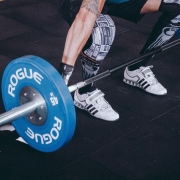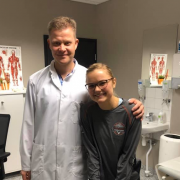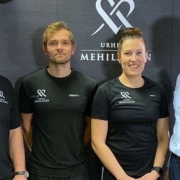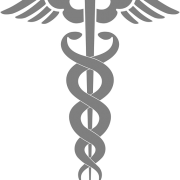PHT Treatments
Managing Proximal Hamstring Tendinopathy
To manage proximal hamstring tendinopathy, start by cutting back on the activity that’s aggravating your tendon. It’s thought, tendinopathy (tendinosis) is partly an overuse injury. The tendon cannot keep up with the amount of activity and the repair process so degenerates.
Tight, weak hamstring muscles cause pulling on tendons and restrict blood flow which causes degeneration.
Weak glutes are another factor. Glutes should be powerful to propel you along. If your glutes are weak, the hamstrings take over and they aren’t designed for this type of work.
Getting A Diagnosis
Have a full examination of the kinetic chain by a qualified, registered physiotherapist. If you have access to an MRI, have this done early on. This should rule out other injuries.
Once you have confirmation of your diagnosis, your physiotherapist can prescribe an eccentric strengthening exercise programme. A good physio will advise you on how much of what type of activity is right for you .
Everyone’s PHT is different. Different stages of severity and recovery. The programme and advice should be tailored to you.
PHT Treatments Available
There’s several treatments for PHT. Follow posts and discussions with people on the PHT Facebook page. (www.facebook.com/ProximalHamstringTendinopathy)
Eccentric Strengthening Exercise Programmes
The treatment that produces results, is an eccentric strengthening programme.
Tom Goom of The Physio Rooms and creator of RunningPhysio.com describes the onset of his proximal hamstring tendinopathy. Tom also talks about his gradual loading programme here. www.running-physio.com/pht-rehab
If Eccentric Exercise Hasn’t Worked, The Following Treatments Have Had Mixed Results:
In Brief:
Prolotherapy
Prolotherapy involves injecting a natural solution directly into the injury site to cause an inflammatory reaction. This is to create new healthy tissue, strengthening the tendon.
From what people have reported, the best results come from having lots of areas of the tendon injected instead of the solution going into one place.
PRP
PRP (platelet rich plasma) is a form of prolotherapy. Platelet rich plasma, from the same patient, is injected into the tendon to promote healing.
Printed in Muscles, Ligaments and Tendons Journal.
Platelet Rich Plasma Treatment Improves Outcomes for Chronic Proximal Hamstring Injuries in an Athletic Population. https://www.ncbi.nlm.nih.gov/pmc/articles/PMC4327356/
Dry Needling – IMS
Dry needling (IMS – intramuscular stimulation) is inserting dry needles (not injecting anything) into shortened, tight muscles and tendons to create micro tears. This induces the bodies’ inflammatory reaction and repair process. Also, when needles are inserted, trigger points (knots) cramp around the needle. When the needle is removed, the trigger point relaxes.
IMS was developed by Dr. Chan Gunn. Find out more here: http://www.istop.org/
Steroid Injections
Steroid injections are generally considered not worthwhile. If you are lucky, you get approximately six weeks of pain relief but an extended period of recovery time. It’s also thought steroid injections are deleterious to tendons.
If you and your doctor decide steroid injections are appropriate, make sure it’s ultrasound guided. The injection should NOT go into the tendon but should go into the tendon sheath space around the tendon.
ESWT – Shockwave Therapy
ESWT (Shockwave therapy) breaks up calcification within tendons. It also causes micro tears that the body repairs. This generates new tissue and reduces inflammation. Although it is somewhat painful, it is tolerable for the short period of time it’s administered. Do not have more than six sessions.
The practitioner should use different heads depending on the anatomy he/she is working on and adjust the intensity during treatment.
The protocol for shockwave therapy is six sessions. It seems healthcare professionals give three sessions, one a week for three consecutive weeks. The patient then has a break for a month to see how they improve while following an eccentric exercise programme.
The Biological Effects of ESWT on Tendons, The Muscles, Ligaments and Tendons Journal. https://www.ncbi.nlm.nih.gov/pmc/articles/PMC3666498/
Surgery
If all else fails and the effects of PHT are too great on your day to day life, surgery can be an option as a last resort. I had a bi-lateral proximal hamstring tenotomy after having PHT for five years. There are different types of surgery for this condition.
One third of my semimembranosus tendon was cut off my pelvis and stitched lower down to the bicep femoris tendon. This lengthened my hamstrings by 3.5cm.
I was given a gradual eccentric strengthening exercise programme to do at the appropriate time following surgery.
I also had a build-up of scar tissue cut away.
Nutrition
However, I wish I’d had my bloods done when my PHT first appeared. Having a mineral profile done may save a lot of hassle and money in the long run.
Nutritional deficiencies and imbalances can be the cause of tight muscles and tendons.
Plasma and RBC blood tests give a more in-depth picture than serum whole blood tests. See the nutrition for PHT post: https://proximalhamstringtendinopathy.org/nutritionforpht
Plasma and RBC mineral profile blood testing may find the underlying cause of your PHT.
If you’re taking supplements without blood testing, they may be causing a nutritional imbalance. This imbalance can cause tight and weak muscles that pull on your tendons.
You can check the registration of a physiotherapist here: http://www.hpc-uk.org/check/
As stated on this site’s home page, I’m not medically qualified in any way, I’m merely a patient with long-term experience of PHT and it’s treatments. All decisions you make, are entirely your own. Always seek professional advice.












Leave a Reply
Want to join the discussion?Feel free to contribute!